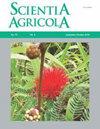Combining deep learning and X-ray imaging technology to assess tomato seed quality
IF 2.6
3区 农林科学
Q1 Agricultural and Biological Sciences
引用次数: 1
Abstract
: Traditional germination tests which assess seed quality are costly and time-consuming, mainly when performed on a large scale. In this study, we assessed the efficiency of X-ray imaging analyses in predicting the physiological quality of tomato seeds. A convolutional neural network (CNN) called mask region convolutional neural network (MaskRCNN) was also tested for its precision in adequately classifying tomato seeds into four seed quality categories. For this purpose, X-ray images were taken of seeds of 49 tomato genotypes (46 Solanum pennellii introgression lines) from two different growing seasons. Four replicates of 25 seeds for each genotype were analyzed. These seeds were further assessed for germination and seedling vigor-related traits in two independent trials. Correlation analysis revealed significant linear association between germination and image-based variables. Most genotypes differed in terms of germination and seed development performance considering the two independent trials, except LA 4046, LA 4043, and LA4047, which showed similar behavior. Our findings point out that seeds with low opacity and percentage of damaged seed tissue and high values for living tissue opacity have greater physiological quality. In short, our work confirms the reliability of X-ray imaging and deep learning methodologies in predicting the physiological quality of tomato seeds.结合深度学习和x射线成像技术评估番茄种子质量
本文章由计算机程序翻译,如有差异,请以英文原文为准。
求助全文
约1分钟内获得全文
求助全文
来源期刊

Scientia Agricola
农林科学-农业综合
CiteScore
5.10
自引率
3.80%
发文量
78
审稿时长
18-36 weeks
期刊介绍:
Scientia Agricola is a journal of the University of São Paulo edited at the Luiz de Queiroz campus in Piracicaba, a city in São Paulo state, southeastern Brazil. Scientia Agricola publishes original articles which contribute to the advancement of the agricultural, environmental and biological sciences.
 求助内容:
求助内容: 应助结果提醒方式:
应助结果提醒方式:


